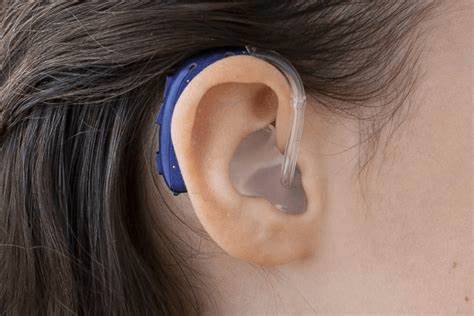Hearing Loss
“High-Frequency Presbycusis”–Is There an Earlier Onset?
Historically, presbycusis (high-frequency hearing loss known to occur in older adults) was believed to occur in older than 50 years. A new article speculates that presbycusis can occur in much younger adults. Arvin et al., (2013) examined healthy adults who self-reported no hearing difficulties between the ages of 20-49. Usually, when one visits the audiologist, hearing is tested at 200-8,000 Hertz. This study examined hearing between 200-16,000 Hertz to detect changes in the higher frequencies.
Eighty participants (37% Malays, 26% Chinese, 29% Indians, 8% other) were grouped by age (20-29, 30-39, and 40-49) and the presence of symmetrical high-frequency sensorineural hearing loss was noted. Any participant with a hearing loss of >20 decibels was considered to have a hearing loss. Anyone with a > 15-decibel difference in hearing loss between ears was considered to have an asymmetrical hearing loss.
In total 40% of participants had high-frequency sensorineural hearing loss, 7 were from age group 20-29, 12 were from age group 30-39, and 13 were from age group 40-49. All participants from the age group 40-49 had symmetrical age-related sensorineural hearing loss. Researchers have believed that presbycusis begins in a patient’s 50’s, with over 75% of those over 50 experiencing this type of hearing loss. The exact cause of presbycusis is unknown, but it is believed to be caused by a multitude of exposures or conditions. This study found that higher frequency hearing loss (greater than 8 Kilohertz) may begin at a much earlier age.
Arvin, B., Prepageran, N., & Raman, R. (2013). “High-frequency presbycusis”-is there an earlier onset? Indian Journal of Otolaryngology and Head and Neck Surgery: Official Publication of the Association of Otolaryngologists of India, 65(Suppl 3), 480–484. https://doi.org/10.1007/s12070-011-0356-x
Recommended hearing loss websites
Behind the ear (BTE) hearing aids

Behind the ear (BTE) hearing aids are a type of hearing device that utilizes an earmold to fit behind the ear and provide amplification of sound. The device consists of a microphone that captures sound waves, an amplifier that increases their volume, and a receiver that delivers the enhanced sound waves directly into the ear canal.
The microphone from a BTE hearing aid is usually placed on the exterior of the ear, behind the earlobe, though it can also be placed in the concha, which is the bowl-shaped portion of the ear. Sound waves are then captured by the microphone, amplified by the amplifier, and then transmitted via a wire to the receiver, which is usually placed in the ear canal and held in place by the earmold.
The sound that is captured by the microphone is distorted, so an amplifier is necessary to rectify these distortions and improve the functioning of the hearing aid. The amplifier increases the volume of the sound waves, which are then transmitted to a receiver that is fitted inside the ear canal. The receiver helps to direct the amplified sound into the ear drum efficiently and with the greatest clarity. Finally, the sound waves are directed into the ear canal and eventually reach the ear drum. The ear drum sends them to the brain where the sound is interpreted and understood. The sound is then amplified, depending on the needs of the user.
Overall, BTE hearing aids are a popular hearing device and are effective in providing audibility and clarity to sounds, speech, and other sounds. They work by using microphones to capture sound, amplifying the sound wave, and then transmitting the wave to a receiver that directs the wave into the ear canal. The sound wave is then amplified as per the user’s needs, providing them with improved hearing.
Presbycusis
Presbycusis is a gradual, age-related hearing loss that occurs in many older adults. It is the most common form of hearing loss and affects roughly one in three people over the age of 65. Presbycusis typically affects both ears equally and is caused by changes in the inner ear that occur as part of the aging process.
Symptoms of presbycusis may include difficulty understanding speech, especially in noisy environments, as well as a reduced ability to hear high-pitched sounds. Some people may also experience tinnitus (ringing in the ears) or a feeling of fullness or pressure in the ears.
While presbycusis cannot be cured, there are treatments available that can help manage the symptoms. These may include hearing aids, assistive listening devices, cochlear implants, or changes in communication strategies. It’s important for older adults to have their hearing checked regularly by a healthcare professional to detect presbycusis and other hearing issues early.